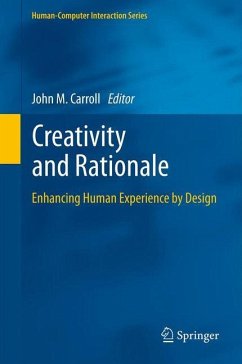
(Re)Searching the Digital Bauhaus

PAYBACK Punkte
57 °P sammeln!
Where does interaction design come from? What foundations are relevant today? In this book, internationally renowned scholars and designers explore how the avant-garde ambitions of the 1920-30s Bauhaus to re-align new technology with emerging social needs combines with a more contemporary sensitivity to participation and the social creativity inherent in the modern digital design materials.
"These creators of the Digital Bauhaus pose here the key questions for our profession and our society and they offer thought-provoking avenues for each reader to follow."
Terry Winograd, editor of "Bringing Design to Software"
"The papers together explore the possibilities for creating an 'aesthetic-technical production orientation' that recontextualizes technology as skilled practice, as always political, and as best created through sustained engagements among people, and between people and things."
Lucy Suchman, author of "Plans and Situated Action"
"These creators of the Digital Bauhaus pose here the key questions for our profession and our society and they offer thought-provoking avenues for each reader to follow."
Terry Winograd, editor of "Bringing Design to Software"
"The papers together explore the possibilities for creating an 'aesthetic-technical production orientation' that recontextualizes technology as skilled practice, as always political, and as best created through sustained engagements among people, and between people and things."
Lucy Suchman, author of "Plans and Situated Action"
The intent of this chapter is to outline a distinctive way of thinking about issues of technology and society that has characterized many Nordic approaches to the topic. One of the characteristics of this approach has been the recognition of the worth of human labour. Technology is not seen as an alien force, but something which is itself a product of human labour, and it can be designed and utilized in ways which augment human skills and expertise, rather than degrading them. What is particularly striking, at least to this author, in this approach is that we are presented not simply with a vision of how things could be better in our society, but with concrete exemplars of how we can build such a better world. It is in recognition of this fact that I have chosen the title of this chapter, as it emphasizes that, while the tradition of Utopian literature is the - lineation of a supposedly idea world which exists no-place (u-topos, in Greek), these visions can be an inspiration for quite practical activities on the ground, as steps towards their realization. As Wilde notes (in the quote above) this is a never-ending quest, as with each achievement, we recognize that there are further bridges to cross and places to be visited.














